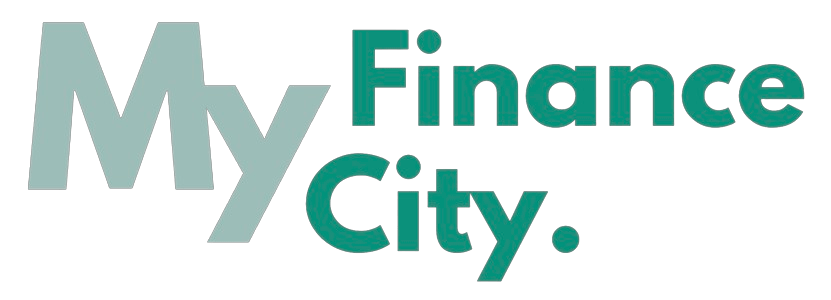Leaving your job raises a critical question: What should you do with your 401k or 403b? It’s a query more and more individuals find themselves pondering. According to data from the Department of Labor, the average number of job changes for the millennial generation, aged 18 to 46, is 11.3 times. Hence, when I received an email from a reader named Juan, the question wasn’t surprising:
In this article, we’ll delve into your options, discuss key factors to consider when choosing the best option for your situation, and outline practical steps for rolling over your 401k into another 401k or an IRA. Please note that the advice here is applicable to both 401k and 403b retirement accounts.
Exploring Your Choices when Leaving a Job
When departing from a job with a 401k or 403b, you have four potential choices for your retirement plan:
- Cash Out: While listed as an option, cashing out holds no retirement planning benefits. Withdrawing funds triggers ordinary income tax, and if you’re not yet 59½ (or otherwise meet qualified distribution conditions), you might face an additional 10% tax. For the purposes of this article, let’s assume this isn’t the choice you’re contemplating.
- Leave It Be: Most 401k plans allow you to keep funds in your former employer’s 401k account. You won’t contribute further, but you can continue investing in the funds provided by the plan. Note that for 401k accounts with balances below $1000, this option might not be available. For accounts under $5000, you might need to take action to prevent your old employer from automatically allocating the funds.
- Roll Over to Current Employer’s 401k: If your new employer has a 401k or 403b and allows rollovers, you can move your funds into your new employer’s retirement plan.
- Roll Over to IRA: Lastly, you always have the option to roll over your 401k into an Individual Retirement Account (IRA).
Factors to Consider When Making a Decision
While there isn’t a one-size-fits-all correct answer, some crucial factors warrant consideration when determining what’s best for you. The first factor is the pathway to securing sound investment choices.
Investment Choices
One potential drawback of 401k or 403b plans is that some investment options might be suboptimal. Therefore, evaluating the investment choices of both your former and new employer is crucial. Part of this assessment should include scrutinizing the expense ratios of mutual funds in the plan. Additionally, keep in mind that not every mutual fund option in the plan might be a good one for your asset allocation strategy. If the investment choices from your previous employer align with your asset allocation plan, retaining them might be a reasonable choice. This was precisely what I did in my first job, where I stayed for a decade and, upon changing jobs, left my funds in the company’s retirement plan as I was content with the investment choices.

Simplicity
The second consideration is simplicity. The fewer accounts you have, the easier they are to manage. This holds true when rebalancing your investment portfolio and tracking investments. If your new employer provides excellent investment choices, rolling your account from the old employer to the new one can reduce the number of your accounts. If both your old and new employers offer good investment choices, you’ll need to weigh the inconvenience of rolling against managing two accounts. In the long run, simplicity leans towards consolidating accounts. Moreover, as we’ll discuss shortly, rolling over a 401k isn’t a complex process.
The 55-Year-Old Rule
The third consideration is the 55-year-old rule. This is a rule that many people tend to overlook. If you leave an employer at 55 or later, you can begin withdrawing funds from your 401k without the 10% penalty. What if you leave at 54? Can you wait until a year later when you turn 55 to start penalty-free withdrawals? Unfortunately not. This exception only applies if you leave the employer at or after the age of 55. Of course, assuming it’s a traditional 401k or 403b, you’ll still need to pay regular income tax.
So, what does this have to do with rolling over a 401k? The 55-year-old rule doesn’t apply to IRAs. If you roll your 401k into an IRA, you can’t take advantage of this rule. Therefore, when deciding the best option for your retirement account, this factor should be considered.
Rollover Recommendations
If you decide to roll over your 401k or 403b, you’ll want to use what’s known as a direct rollover. A direct rollover involves moving your investments directly from one plan to another. In other words, you can’t touch these funds. Direct rollovers are quick and convenient.
There’s also a method called an indirect rollover, where you touch these funds. The funds are sent to you, and then you have 60 days to roll them into an IRA or 401k. Indirect rollovers have several downsides. Firstly, your old employer might withhold 20% of the rollover funds for taxes. While you’ll eventually get this money back, you must now pay an extra 20% to roll the entire amount into the new account. Moreover, if you fail to roll over the assets within 60 days, the IRS treats the assets as a distribution. The result could be a substantial tax bill, including a 10% penalty.
Finally, the easiest way to initiate the direct rollover process is to contact the administrator of the new plan where you want the funds to go. They might have a dedicated department assisting investors with executing 401k rollovers. They’ll guide you through the paperwork and ensure everything is handled correctly.

Where to Open an IRA?
If you plan to open an IRA, where should you do it? The key to answering this question is first deciding what type of investments you’ll purchase. For instance, if you want to invest in Fidelity funds, opening an IRA with Fidelity makes sense. If you plan to invest in funds from any mutual fund company, opening an IRA with that mutual fund company is reasonable. Not only can you invest in their funds for free, but you can also add a brokerage account to invest in stocks, bonds, or ETFs.
If you want to invest in a range of ETFs and stocks, choosing a low-cost brokerage makes the most sense. Brokerage firms offer IRA accounts and allow you to roll over a 401k. TD Ameritrade is a personal favorite of mine due to its low trading costs and physical offices almost everywhere. I’ve also used OptionsXpress, which offers a $100 bonus for new accounts. You might have another brokerage firm you prefer, but if you plan to trade a lot of ETFs and individual stocks, a low-cost brokerage is a good choice for an IRA.
The fourth option, of course, is robo-advisors. These tools, for a fee, assist you in creating an asset allocation plan and rebalancing your investment portfolio, easing much of the work.
I hope these recommendations help you better understand how to handle your 401k or 403b when leaving a job. Remember to carefully weigh your options and ensure the choice aligns with your financial goals and retirement plan before making a decision.













+ There are no comments
Add yours